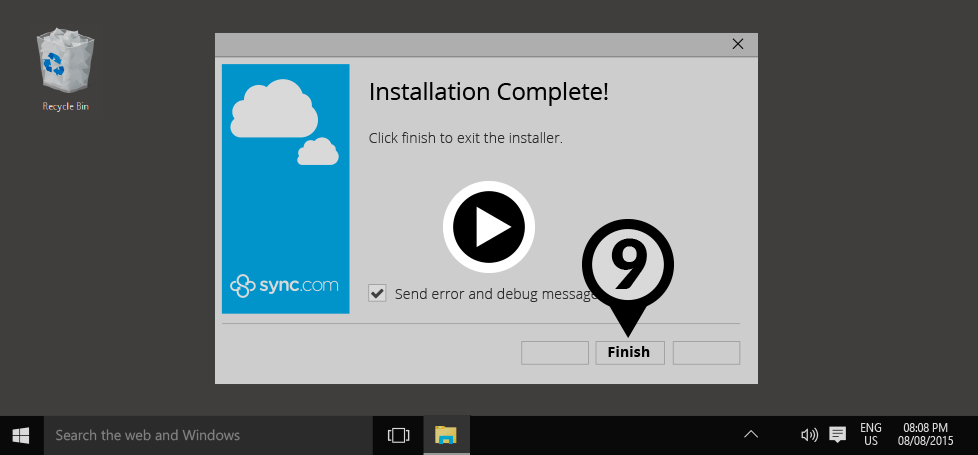Proceeding Back Mac OS
Operating system upgrades bring increases in efficiency, new features, stronger security, and updates to included software utilities. The following page shows you how to upgrade your Apple Macintosh desktop or laptop computer to Catalina (10.15), the current version of macOS.
- Check compatibility.
- No matter what I do or try, I cannot get it to open up to, or switch back to the Mac OS. I do not have a Bootcamp Control icon anywhere on the Windows10 screen or task bars. Not in the ^ extra menu that you can pull up on the right side of bottom task bar. I tried restarting multiple times while holding down the key on the bottom of the keyboard.
- Apple includes its own backup software, Time Machine as part of the macOS. It’s an exceptionally easy to use solution. All you need to do is plug in an external storage device, hard drive or SSD.
Check compatibility

Boot Recovery Mode by holding down Command-R while you turn on or restart your Mac. When prompted, enter the firmware password and hit Enter (Return) to continue startup. Download the macOS 10.12 Installer. Download the new macOS 10.12 Sierra from the Mac App. If you plan to install Snow Leopard (Mac OS X 10.6), or any previous system, insert the appropriate Mac OS X install disc and restart the computer. Hold down the ‘c’ key as soon as you hear the chime, then let go when you see the Apple logo. The system should eventually boot into the installer, where you first must choose a language.
Proceeding Back Mac Os Download
Before installing Catalina, verify your Mac is eligible for the upgrade.
Verify the model of your Mac
The following Mac models can be upgraded to macOS Catalina.
- Mac Pro - All models produced from mid-2013 and later.
- MacBook Pro - All models produced from mid-2012 and later.
- iMac - All models produced from late 2012 and later.
- MacBook - All models produced from late-2015 and later.
- MacBook Air - All models produced from late-2012 and later.
- Mac mini - All models from mid-2012 or later.

If your Mac is not on this list, you cannot upgrade to Catalina. However, you can still try to upgrade to El Capitan.
Back up your data
Although not required, we strongly recommend you back up your Mac before proceeding with an upgrade. If anything goes wrong, you can restore your Mac to its previous state.
Check your OS version
The following versions of OS X and macOS can be upgraded to macOS Catalina.
| OS name | Version | Release date |
|---|---|---|
| OS X Lion* | 10.7 | July 20, 2011 |
| OS X Mountain Lion* | 10.8 | July 25, 2012 |
| OS X Mavericks | 10.9 | October 22, 2013 |
| OS X Yosemite | 10.10 | October 16, 2014 |
| OS X El Capitan | 10.11 | June 8, 2015 |
| macOS Sierra | 10.12 | June 13, 2016 |
| macOS High Sierra | 10.13 | June 5, 2017 |
| macOS Mojave | 10.14 | June 4, 2018 |
* If your Mac is running OS X Lion or Mountain Lion, you must upgrade to El Capitan before you can upgrade to Catalina.
If your Mac is running Mavericks or newer, you can proceed to upgrade to Catalina.
Upgrade to El Capitan, if necessary
If your Mac is running OS X Lion or Mountain Lion, follow these steps to upgrade to El Capitan.
- Download the El Capitan installer from Apple. The file size is 5.8 GB, so the download may take a while, depending on the speed of your Internet connection.
- Double-click the downloaded archive, InstallMacOSX.dmg, to view its contents.
- In the archive, double-click InstallMacOSX.pkg.
- Follow the on-screen instructions to perform a compatibility check, and prepare for installation.
- When this process is complete, an installer application named Install OS X El Capitan is placed in your Applications folder. Double-click it to begin installation.
- During installation, your Mac may restart, or display a blank screen short time. Do not close the lid or power off your Mac until installation is complete.
Upgrade to Catalina
After you've gone through the preparation steps, you need to download and install the latest version of macOS. The following steps show you how.
- In the menu bar, click the Apple icon to open the Apple menu.
- In the Apple menu, select App Store.
- In the App Store, on the left side of the window, select Updates.
- In the Updates window, locate the line that says Catalina.
- On the far right side, select Update.
- Catalina is downloaded and installed.
- During installation, your Mac may restart, or display a blank screen for a short time. Do not close the lid or power off your Mac until installation is complete.
Proceeding Back Mac Os 11
Additional information
Proceeding Back Mac Os Catalina
- See our update definition for further information and related links.